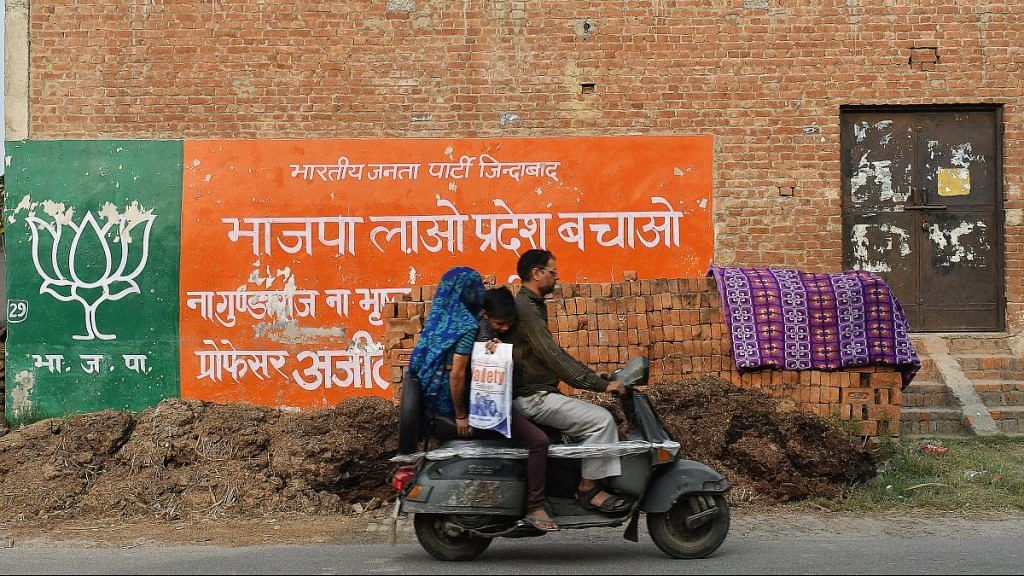The political theatre has shifted to rural India ahead of the 2019 election.
The rural voter is in vogue, and has pushed some much-publicised flagship programmes of the Narendra Modi government to the backseat. In the din of farm loan waivers, one doesn’t hear much about Startup India, Make in India or Digital India. It’s safe to say that the political theatre has shifted in the election season. It is rural and not urban India that will be at the centre of the political rhetoric in the run-up to 2019.
In what is just a trailer, Congress president Rahul Gandhi, who promised to waive off farm loans in almost all his campaign speeches ahead of the state elections, has now said that he “won’t let the Prime Minister sleep” till a nationwide farm loan waiver is announced.
Rahul Gandhi knows the rural voter is perhaps the BJP’s biggest worry. The closely-contested Gujarat election last year had shown a clear rural-urban divide, with the Congress performing better than the BJP in the rural areas. And, the 11 December results in Madhya Pradesh, Rajasthan and Chhattisgarh indicated that the agrarian anger against the BJP is very real. In 2004, the Atal Bihari Vajpayee government lost the Lok Sabha polls after its glamorous ‘India Shining’ campaign failed to cut ice with the rural voters.
Reeling from the recent electoral losses, the BJP is now engaged in a ‘who loves the farmer more’ competition with the Congress. With the newly-elected Congress chief ministers in the three states announcing farm loan waivers this week, the BJP lost no time in waiving off farm loans in Assam and rural electricity bills worth Rs 650 crore in Gujarat.
Also read: Address jati, and not just caste, to fix rural welfare schemes like MGNREGA
A different 2014 pitch
This is the same BJP, which began its 2014 stint with an attempt to water down the land acquisition act and make it less pro-farmer.
Politics in India, always more rural-centric in terms of voter emphasis, had started to shift around that time. While the 2011 Census says 31 per cent of the Indian population lives in urban areas, IDFC’s work on urbanisation using satellite data finds that nearly 63 per cent of India is actually urban.
In the run-up to the 2014 Lok Sabha polls, Modi addressed the urban voter extensively, playing up his investment-friendly, growth-oriented image as the chief minister of the ‘prosperous’ Gujarat.
Prime Minister Narendra Modi knew the urban voter was important and started his tenure with an urban-political lingo. Digital India, Startup India, 100 smart cities, Make in India, bullet train found extensive mention in his speeches.
Also read: How Modi stopped rural Indian women from inhaling an equivalent of 400 cigarettes per day
Going rural in 2018-19
Cut to 2018, and the BJP’s emphasis has shifted from the urban to the rural voters. While the Modi government’s flagship smart city project is still in the works, the focus is now more on projecting schemes targeting rural India, like Ujjwala and Pradhan Mantri Awaas Yojana (Grameen). So, Gram Swaraj Abhiyan is now occupying BJP’s mindspace more than Digital India.
Similarly, Modi’s amusing coinages like ‘Information Technology + Indian Talent = India Tomorrow’, aimed at the urban youth, are now giving way to ‘Gaon, Gareeb, Kisan’ slogans. And of course, the rural employment guarantee scheme, which PM Modi in his initial years called a “living monument” of UPA’s failures, has now become dear to the BJP government, which is pumping more funds into it.
The Congress has constantly forced the BJP to turn rural in the last five years. Its spirited opposition to the land bill amendments forced the Modi government to drop the idea and risk being labelled anti-industry instead of being called anti-farmer. Gandhi’s ‘suit boot ki sarkar’ jibe made Modi conscious of the need to adopt a pro-rural, pro-poor image. And by announcing loan waivers as soon as it came to power in the heartland states, the Congress has done it again.
The rural voter has clearly taken precedence over her urban compatriot, and this seems to be getting more accentuated with each passing day. The recent state polls show the BJP did lose its grip over urban centres as well, but the party seems more eager to woo the rural audience by waiving farm loans and rural electricity bills.
The rural voter is set to be the hot favourite in the poll season, and if the last week is anything to go by, the urban voter could well find herself a bit out of style in the Indian political milieu.
